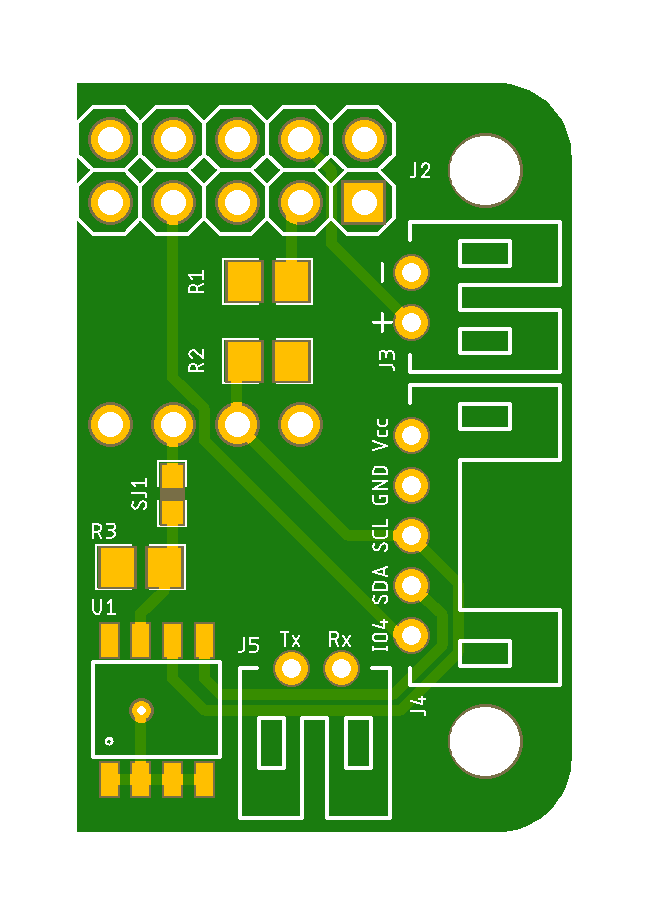Raspberry Pi OLED Display Hat
This is a simple Pi Hat to support an I2C OLED display. It is sized to use the 'upper' pins (1–10) of the Raspberry Pi header and sit beside my LoRa-Pi Hat.

While the primary objective was to provide a platform for an I2C OLED display, the board breaks out all of the first 10 pins of the header so that they are available for use if required.
Board Layout
I started with the details provided in this post on the raspberrypi-spy.co.uk website to develop a fairly basic breakout board (see Schematic) as illustrated below:
| Top | Bottom |
|---|---|

|

|
OLED-Pi [v1.1] PCB

|
OLED-Pi Eagle CAD Files | [19 KB] |

|
OLED-Pi CAM Files | [39 KB] |
I didn't get the positioning of the OLED display quite right the first time around (the above version [v1.1] corrects this problem). When I was amending the design, since I had the room, I decided to add an EEPROM, as illustrated in the schematic below, in line with that on my other processor boards. I'm not sure if this is really necessary on a Pi, with its SD card, but it's there as an option if it's ever needed.
OLED-Pi EH Board Schematic
| Top | Bottom |
|---|---|

|

|
OLED-Pi EH [v1.0] PCB

|
OLED-Pi EH Eagle CAD Files | [19 KB] |

|
OLED-Pi EH CAM Files | [39 KB] |
The Raspberry Pi 40-pin header configuration is included here for reference (courtesy of raspberrypi-spy.co.uk).
Raspberry Pi Header Configuration
In addition to the 4P female header to support the display, the OLED-Pi board breaks out the first 10 pins of the Raspberry Pi header into two 2P JST connectors, one for power (5V/GND) and the other for the serial communications (Tx/Rx—GPIO14/GPIO15), and one 5P JST connector for the remaining pins, 3.3V/GND power, I2C SDA/SCL (GPIO2/GPIO3) and GPIO4. There are two 5V pins and two Ground pins in this part of the header, so only 8 distinct pins actually need to be broken out.
Software
I pretty much copied the software configuration sequence from raspberrypi-spy but my notes on the process are provided in the following document.

|
Raspberry Pi OLED Configuration.docx | [101 KB] |
Further details pending



